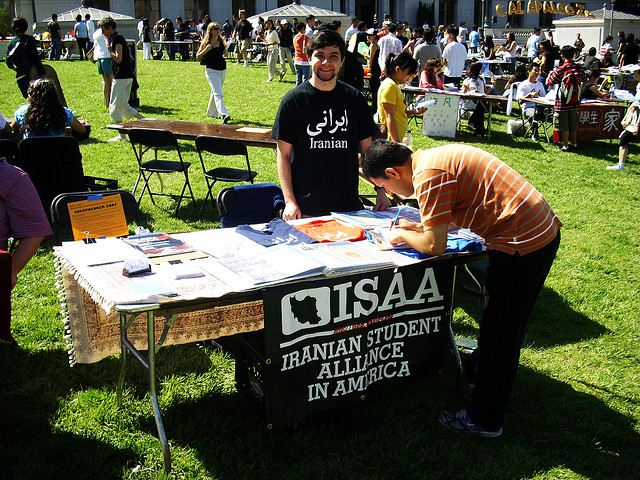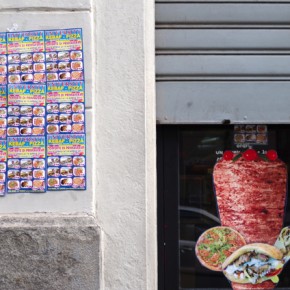International sanctions on Iran have devastated the country. In the past year, the latest round of US and EU sanctions due to Tehran’s nuclear development program are the toughest in Iran’s history. With a plummeting currency, medicine shortages, and rising food prices, Iranian students now find themselves struggling to gain admission to universities abroad.
With a plummeting currency, medicine shortages, and rising food prices, Iranian students now find themselves struggling to gain admission to universities abroad.
Iranian students heading abroad are at fault for two reasons: for being from a sanctioned country, and studying in a field related to the pursuit of nuclear power in Iran. Once accepted to a foreign university, many Iranian students are also unable to pay for their education due to sanctions significantly devaluing Iranian currency, and prohibiting the transfer of funds from Iran.
For the last two years, Sahar has applied and been rejected from Ph.D programs in different countries, including Japan, Australia, Canada and the U.S. As a medical radiation engineering student, she believes her field held her back in the admissions process.
“Physics, chemistry, mechanics and nuclear engineering students are most probably rejected due to their field of study,” said Sahar. When she attended an academic conference in Japan, she was told that her university application would be rejected because as a citizen of Iran she could not have access to their nuclear data.
“I felt terrible when I was abandoned in Japan and prevented from joining a scientific tour because of my nationality. It was not my fault. I am not supporting the government’s policy. I was treated like a criminal or spy, and it is not fair. Two years ago, I was asked to work for Iran’s Atomic Energy Organization, but I didn’t accept,” said Sahar.
Iranian students studying in science and engineering-related fields do not necessarily pursue nuclear development careers upon returning home.
Another Iranian student, who wishes to remain anonymous, experienced a similar ordeal with his pursuit of a Ph.D in mechanical engineering. After being admitted with full funding to the University of Florida, he waited over one year for his F-1 Student Visa to be approved, but was rejected. He was very disappointed, and he finds it unfair to assume that students in his field would end up working for the Iranian nuclear program. He now studies in Toronto.
Once Iranian students have been admitted to a university abroad and received an I-20 form, they must then apply for the F-1 Student Visa. Since Iran does not have a U.S. Embassy, students applying for the F-1 visa must have the financial ability to travel to a nearby embassy in the United Arab Emirates, Armenia, Cyprus, Azerbaijan, Turkey or other locations.

An Iranian masters student at Parsons described the visa process as very expensive and time consuming. She also wishes to remain anonymous, since she travels back to Iran. She currently struggles with using funds from Iran due to the devaluation of the rial, or Iranian currency.
“Devaluation of Iranian currency is the most significant. It influences everything. The Iranian currency devalues one quarter. You cannot transfer money from Iranian banks to the U.S. Iranian students have to carry money with themselves when they come to the U.S. And you know how stressful and risky it is,” she said. After arriving in New York six months ago, she had to apply for a job on campus, but still finds it difficult to support herself.
An Iranian physics undergraduate at New York University said less Iranian students apply abroad for undergraduate studies due to financial limitations. In graduate programs, there are more funding opportunities. Now with sanctions, she said, “The price of the dollar in Iran is now three times the price of two years ago when I applied. So my expenses are now three times more than what I expected them to be.”
Some Iranian students abroad are experiencing student loan rejection and freezing of bank accounts, according to Public Affairs Alliance of Iranian Americans. This organization recently conducted an online survey, reporting that “over two-thirds of the students said that the devaluation of the rial and restrictions on bringing money to the U.S. were the cause of their financial hardship.”
However, some Iranian students have not experienced financial hardship. A biomedical engineering student at Columbia University, said he receives full funding from school. He moved to New York six years ago, when sanctions were showing less widespread effects on Iran’s economy.
After completing a master’s degree in architecture in Iran, Fatemeh emigrated from Iran in 2010 to pursue another master’s degree in architecture at City University of New York. She funded her own education, and she now works at an architectural firm in Queens under the Optional Practical Training visa, which grants students one year to work or intern in their field after graduation. She hopes to eventually be sponsored by her employer with a H-1B visa.
Recently, The Guardian reported that universities in Denmark and the Czech Republic explicitly rejected Iranian students on the basis of international sanctions. Immigration policies in European countries are also less lenient in allowing immigrants to stay post-graduation to attain employment.
“There are not enough jobs in Europe. And after you have done your studying, they kick you out. They don’t want you to stay,” said Fatemeh.
Like many other Iranian students who have immigrated abroad, Fatemeh feels fortunate to have left Iran. “The education I was getting in Iran was not what I wanted,” she said.
Author’s Note: Last names have been dropped due to sources wishing to not be identified. In other cases, names are not revealed due to personal security considerations in Iran.
Photographs courtesy of Hossam el-Hamalawy and Eric James MPLS. Published under a Creative Commons license.





